The Los Angeles Urban League (LAUL) and Time Warner Cable (TWC) have teamed up to present on February 8, 2013 a free interactive webcast with civic leaders who will share insight on Black History in LA. The “There is Black History in LA” webcast will take place from 1:30pm – 2:30pm PT and will feature new LAUL CEO and President Nolan V. Rollins, Reverend Cecil “Chip” Murray and community activists “Sweet Alice” Harris and John W. Mack.
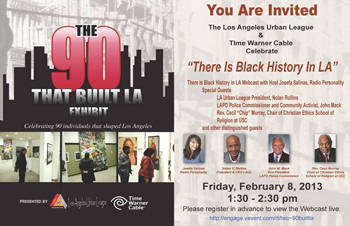
The webcast (which can be accessed at http://engage.vevent.com/rt/twc~90builtla) offers an opportunity for the LA community to interact with the aforementioned individuals and host Josefa Salinas of KTLK am 1150 and HOT 92.3, and learn more about the history of civil rights in LA. It builds on an exhibit – “The 90 That Built LA” – at the Museum of African American Art (MAAA http://www.maaala.org/) which opened on December 12, 2012 and celebrated LAUL’s 91 years of existence by honoring 90 individuals who have fought for civil rights and equality. In addition to the webcast and other Black History Month events (see Facebook post), LAUL will co-present a panel featuring USC Annenberg School for Communication and Journalism Dean Ernest J. Wilson III, Mack and USC Dornsife African Studies Director Francille Rusan Wilson, who will discuss the PBS special “The PowerBroker: Whitney Young’s Fight for Civil Rights” after it is screened at the USC Annenberg Auditorium on February 11. (http://annenberg.usc.edu/Events/2013/130211Powerbroker.aspx)
LAUL VP of Marketing & Communications Chris Strudwick-Turner said her team had the vision for the exhibit, which features the tagline “We Built LA” to assert the contributions of Blacks and other minorities to LA’s development, several years ago and was able to turn it into reality thanks to TWC. “Like us, they saw the vision of what this exhibit could be and they have been with us every step of the way as a presenting sponsor to put this exhibit together for the community,” said Strudwick-Turner in a December statement to the press.
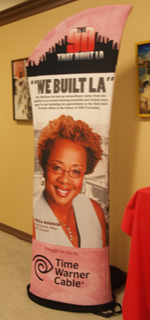
Members of the TWC Diversity and Inclusion team recently visited the exhibit–located near Leimert Park at the MAAA’s space at the Baldwin Hills Crenshaw Mall’s Macy’s third floor–on February 1, 2013 to commemorate 15 months of partnership between LAUL and TWC and promote the aforementioned webcast. TWC Regional VP of Operations Debi Picciolo said in a press statement her company was “proud of our long term partnership with the Los Angeles Urban League, and delighted we could help bring this exhibit to the community.”
One of the most notable aspects of the webcast and exhibit is the rare opportunity for young people in LA to delve deep into Black history in the city thanks to the presence of individuals like Reverend Chip Murray. Murray, who grew up in the South during segregation and whose insight on civil rights movement like the 1992 LA uprising was featured in a 2012 Intersections South LA story (http://www.bit.ly/UDlnGw), will answer questions from webcast attendees and discuss the struggle that made equality possible. Murray and his fellow panelists plan to highlight trailblazers from the distant past such as Biddy Mason–a slave that walked several hundreds of miles to LA to gain her freedom–in addition to former LA Mayor Tom Bradley, who made history in LA as the first Black mayor of a major American city.
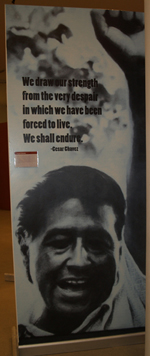 Angelenos can discover historic art and photos commemorating LA trailblazers in fields such as cinema, civil rights, music and media; Sir Sidney Poitier, Cesar Chavez, Ella Fitzgerald and Paula Madison, respectively, at “The 90 that Built LA” exhibit through March 7, 2013.
Angelenos can discover historic art and photos commemorating LA trailblazers in fields such as cinema, civil rights, music and media; Sir Sidney Poitier, Cesar Chavez, Ella Fitzgerald and Paula Madison, respectively, at “The 90 that Built LA” exhibit through March 7, 2013.
Elias Kamal Jabbe is the Founding Editor of MulticulturalMatters.org (http://MulticulturalMatters.org).









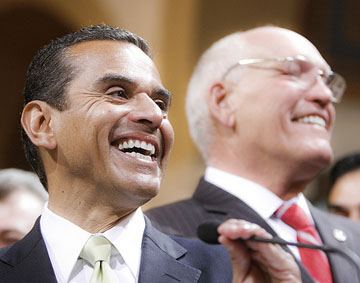 As Black History Month draws to a close, one group in South Los Angeles is just starting a celebration of the future of African Americans.
As Black History Month draws to a close, one group in South Los Angeles is just starting a celebration of the future of African Americans.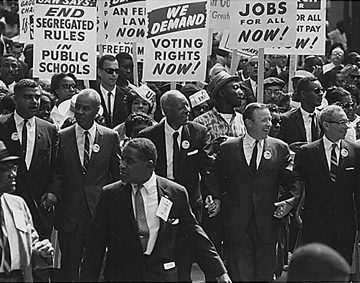
 To raise awareness about HIV/AIDS, the William Grant Still Arts Center held a doll-making workshop and offered free HIV/AIDS testing on Saturday. National Black Awareness Day is Monday, Feb. 7.
To raise awareness about HIV/AIDS, the William Grant Still Arts Center held a doll-making workshop and offered free HIV/AIDS testing on Saturday. National Black Awareness Day is Monday, Feb. 7.  Dolls of Hope have been meeting at the center for the last three years for Black HIV/AIDS Awareness Day. The organization also has workshops all over the world, with the first during 1998 world AIDS Days.
Dolls of Hope have been meeting at the center for the last three years for Black HIV/AIDS Awareness Day. The organization also has workshops all over the world, with the first during 1998 world AIDS Days.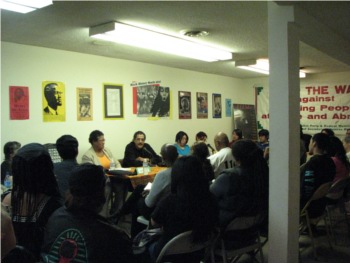 South Los Angeles community members gathered Thursday for a home-cooked meal and a thought-provoking discussion to debunk the myth of a post-racial society after the election of Barack Obama.
South Los Angeles community members gathered Thursday for a home-cooked meal and a thought-provoking discussion to debunk the myth of a post-racial society after the election of Barack Obama.




